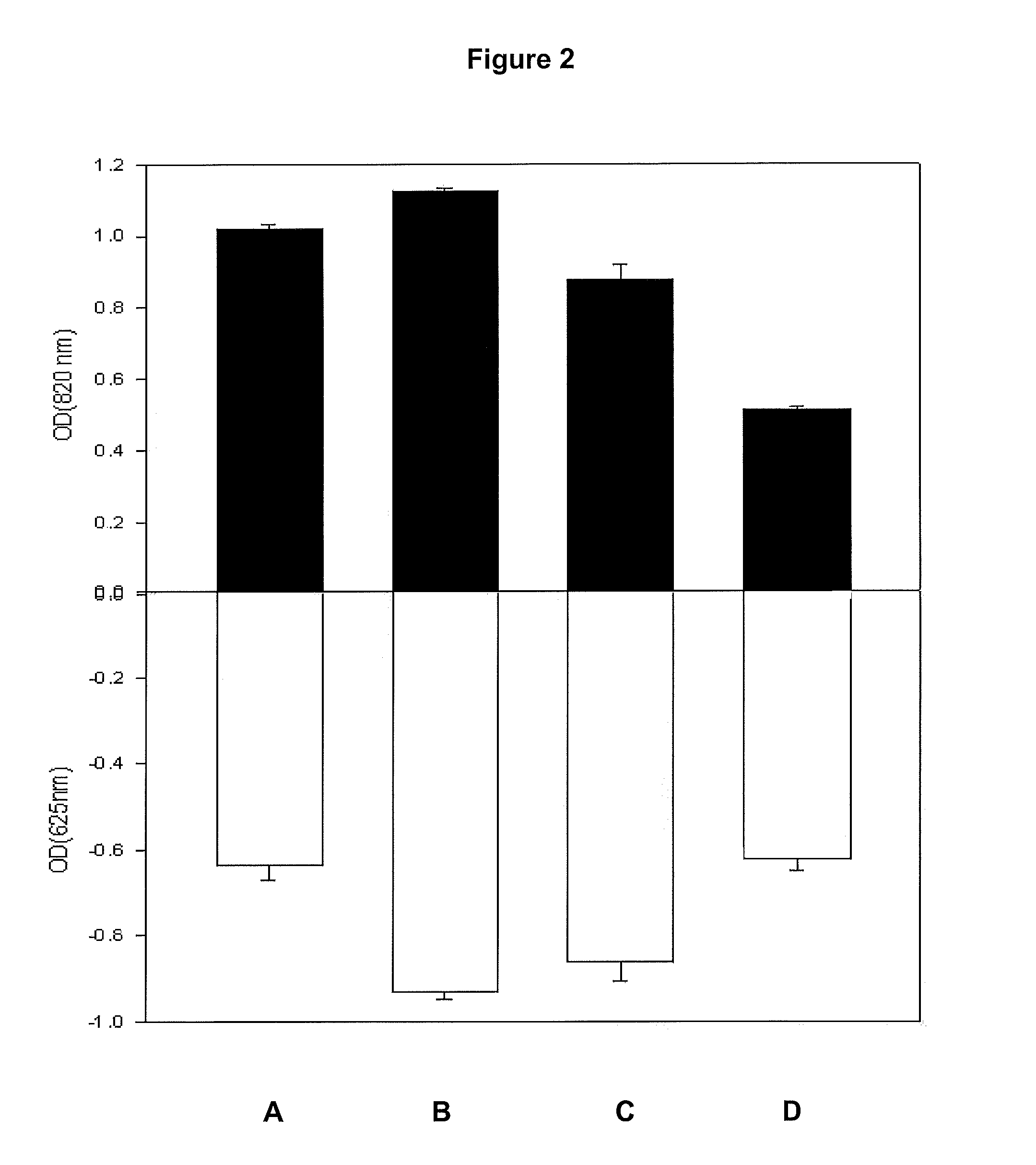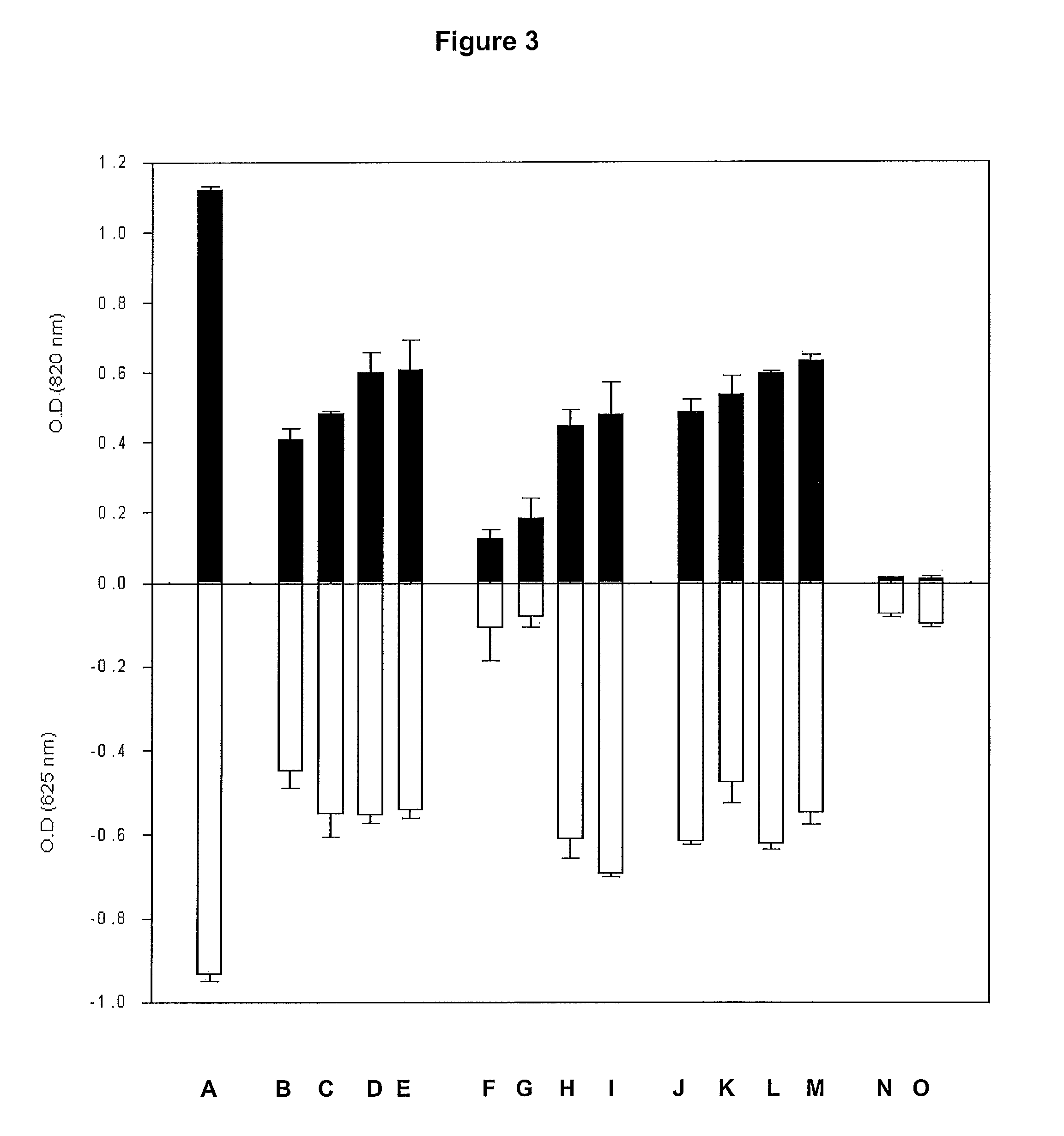Synergistic composition useful as microbiological growth medium for rapid screening of phosphate accumulating microorganisms
a technology synergistic composition, which is applied in the direction of microbiological testing/measurement, biochemistry apparatus and processes, etc., can solve the problems of negative environmental effects, insufficient research on the effect of these media on the bacterial response, and insufficient data on the effect of phosphate accumulating microorganisms
- Summary
- Abstract
- Description
- Claims
- Application Information
AI Technical Summary
Benefits of technology
Problems solved by technology
Method used
Image
Examples
example 1
[0059]Isolation of PAOs has been reported to be problematic due to their slow growth rates. This discrepancy has limited our understanding of the PAOs. In environments with diverse microbial populations and limited organic resources, it is possible that PAOs are often out-competed by organisms capable of utilising available nutrients more rapidly. The only avenues currently available for the study of uncultured bacteria are cultivation-independent molecular ecological techniques that have proved to be very powerful for the study of bacteria in their natural settings. Parallel study of laboratory cultures would, however, strongly complement molecular ecological investigations and enhance research into the roles of soil bacteria and their biotechnological potentials. Another limiting factor in the isolation of PAO species from activated sludge is the lack of suitable media that would support the growth of all viable nutritional types. The availability of pure cultures will however gre...
example 2
[0075]Perhaps only 1 to 10% of the existing soil bacterial species are known. It is possible that a group of microorganisms with a particular function consists of populations of many different species, but virtually nothing is known about the dynamics of these populations and their regulation in soil. Therefore in an attempt while developing the PAM media for qualitative screening of phosphate-accumulating microorganisms, screening of several media for their efficiency to select phosphate-accumulating microorganisms preferentially on petri-plates was conducted. Despite the limitations of the enumeration of microbes by the petri-plate method to examine the diversity of various microbes that are present in the environment, it is a powerful method that has contributed substantially to the knowledge of microbiology.
[0076]Evaluation of the efficacy of PAM was done to enumerate bacterial diversity using M9, NM medium, PAM with Yeast extract, PAM with Peptone and PAM with Yeast extract and...
example 3
[0080]Screening several thousands of PAOs using quantitative methods requires investment of time, labour and chemicals. Therefore, in the present investigation an attempt has been made to develop a new protocol based upon visual observation, for a quick and reliable detection of PAOs. Therefore, it was envisaged to modify the PAM medium by incorporating TBO; a blue-coloured dye that decolorizes owing to the drop in the concentration of phosphate in the medium, as an indicator to quickly evaluate the level of phosphate accumulation based upon visual observations. The metachromatic activity of poly(P) allows for staining the cells with TBO within cellular vacuoles. TBO has been used to identify the nonradioactive poly(P) species obtained from biological systems after separation by PAGE. We used a methodology that is applicable for poly(P) species resolved by PAGE that visualizes linear poly(P) species less than 5 Pi units long, as well as Pi and the trimetaphosphate ion (P3O9)3−. This...
PUM
| Property | Measurement | Unit |
|---|---|---|
| temperature | aaaaa | aaaaa |
| temperature | aaaaa | aaaaa |
| concentration | aaaaa | aaaaa |
Abstract
Description
Claims
Application Information
 Login to View More
Login to View More - R&D
- Intellectual Property
- Life Sciences
- Materials
- Tech Scout
- Unparalleled Data Quality
- Higher Quality Content
- 60% Fewer Hallucinations
Browse by: Latest US Patents, China's latest patents, Technical Efficacy Thesaurus, Application Domain, Technology Topic, Popular Technical Reports.
© 2025 PatSnap. All rights reserved.Legal|Privacy policy|Modern Slavery Act Transparency Statement|Sitemap|About US| Contact US: help@patsnap.com



